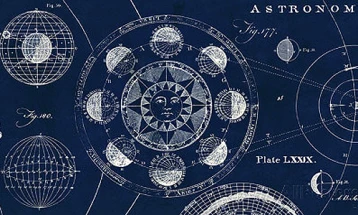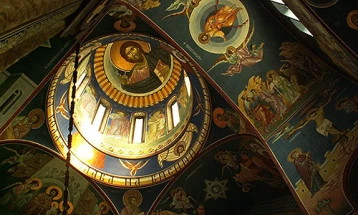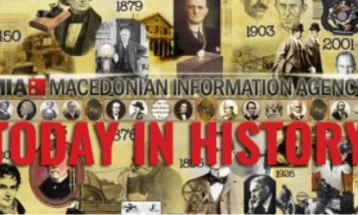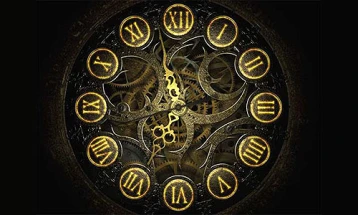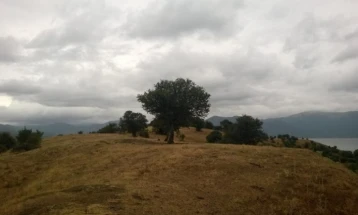Religious calendars
- Born in the village of Maroutha, near the city of Samosata in Mesopotamia, of Christian parents, Elias and Martha, he was a gift of God through the tearful prayers of his mother, who was barren, and was dedicated to God in his youth.
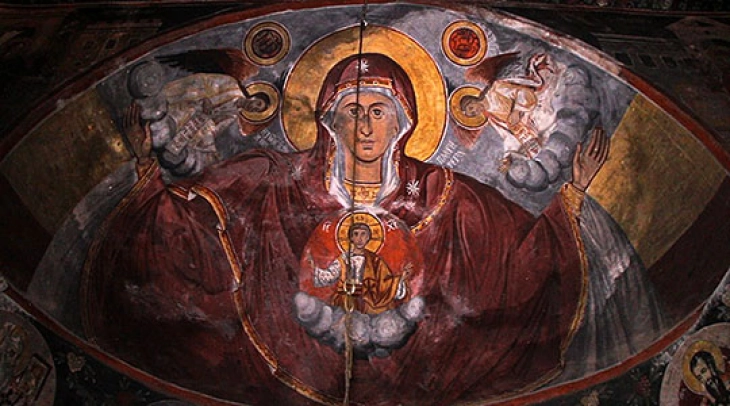
24 December 2023 (MIA)
Macedonian Orthodox Church Calendar
Our Holy Father Daniel the Stylite
Born in the village of Maroutha, near the city of Samosata in Mesopotamia, of Christian parents, Elias and Martha, he was a gift of God through the tearful prayers of his mother, who was barren, and was dedicated to God in his youth. He embraced the monastic state at the age of twelve and visited Simeon Stylites, receiving his blessing. Desirous of solitude, Daniel left his monastery and withdrew to an abandoned pagan temple on the shore of the Black Sea. He endured many assaults from demons, but overcame them all by prayer, endurance and the sign of the Cross. After that, he climbed up onto a pillar, where he remained till his death, enduring with equanimity both heat and cold, and attacks from both men and demons. Many disciples gathered around his pillar, and he led them towards eternal life by his example and his words. God rewarded His devoted servant with great grace in this life, and he worked many miracles of help to men, and foretold future events. People came to his pillar from all parts, seeking help and advice from the saint of God. Kings and patriarchs came to him, as well as simple folk. The Emperor Leo the Great used to bring his foreign guests, princes and nobles, and show them Daniel on his pillar: ‘Here is the wonder of my empire!’ Daniel foretold the day of his own death, taught his disciples as a father would his children, and took leave of them. At the time of his death, his disciples saw angels, prophets, apostles and martyrs around the pillar. Having lived in asceticism for eighty years, this angelic man entered into rest, and into the Kingdom of Christ, in 489.
Catholic calendar
Eve of a Feast
The fast on Christmas Eve is mentioned by Theophilus of Alexandria (d. 412), that before the Epiphany by St. John Chrysostom (d. 407), that before Pentecost by the Sacramentary of St. Leo I. Pope Nicholas I (d. 867), in his answer to the Bulgarians, speaks of the fast on the eves of Christmas and of the Assumption. The Synod of Erfurt (932) connects a fast with every vigil. The very fact that the people were not permitted to eat or drink before the services of the vigil (Vespers and Matins) were ended, after midnight, explains the excesses of which the councils and writers speak. The vigils of Christmas, the Epiphany, and Pentecost are called vigiliae majores; they have a proper Office (semi-double), and the vigil of Christmas, from Lauds on, is kept as a double feast. The rest are vigiliae minorea, or communes, and have the ferial office. On the occasion of the reform of the Breviary, in 1568, a homily on the Gospel of the vigil was added, an innovation not accepted by the Cistercians. If a vigil falls on a Sunday, according to the present rubrics, it is kept on the preceding Saturday; during the Middle Ages in many churches it was joined to the Sunday Office. If it occurs on a double or a semi-double feats, it is limited to a commemoration in the Lauds and Mass (a feast of the first class excludes this commemoration), the ninth lesson in the Breviary, and the last Gospel in Mass. If it occurs on a day within an ordinary octave, the Mass is said of the vigil, the Office of the octave; if it occurs on a feria major, the vigil is omitted in the Breviary and commemorated only in the Mass, if the feria has a proper mass; if not (e.g. in Advent), the mass is said of the vigil, the feria is commemorated. In the Ambrosian Liturgy of Milan only the vigils of Christmas and Pentecost are kept, at least by a special Mass; the other vigils exist only in the Calendar, but are not kept in the liturgy. In the Mozarabic Rite only Christmas has a vigil; three days before Epiphany and four days before Pentecost a fast is observed; the other vigils are unknown.
